From the Alps to the Mediterranean, these European villages will make you appreciate the beauty of taking it slow. The first requirement of a beautiful village is a scenic location, whether among the Norwegian fjords or the sun-splashed Greek isles.
Tellaro, Italy

Tellaro is the last village on the eastern coast of the Gulf of Poets. On its outermost point rises the old Church consecrated to San Giorgio, it dominates a cosy square surrounded by the walled village's brightly coloured homes. You can enjoy several octopus-based recipes who took inspiration from the legend of the bell-ringer octopus that saved Tellaro's people from the Saracen pirates. You can taste hot "farinata", a delicious tart made with chickpea flour, every night from the bakery on the main square. As well as there are small grocery stores dotted around the village which are very well stocked and some of them sell local delicacies including "testaroli", which is a pasta-like dish typically dressed with pesto. Visit www.turismoinliguria.it, for more information. Photo by spaceodissey.
Portofino, Italy

Portofino, is a small Italian fishing village and tourist resort at the Mediterranean Sea, located in the province of Genoa on the Italian Riviera. It is said that Portofino was founded by the Romans, who first named the place “Portus Delphini” (“Port of the Dolphin”), because of the dolphins that inhabited the area. With its romantic and unique design, Portofino has become a perfect place for an unforgettable vacation. Since the 50′s, because of the village’s incredible attraction, tourism had supplanted fishing as the town’s chief industry, and its waterfront was faced with the continuous ring of restaurants and cafés. Photo by snowpeak
Burano, Italy
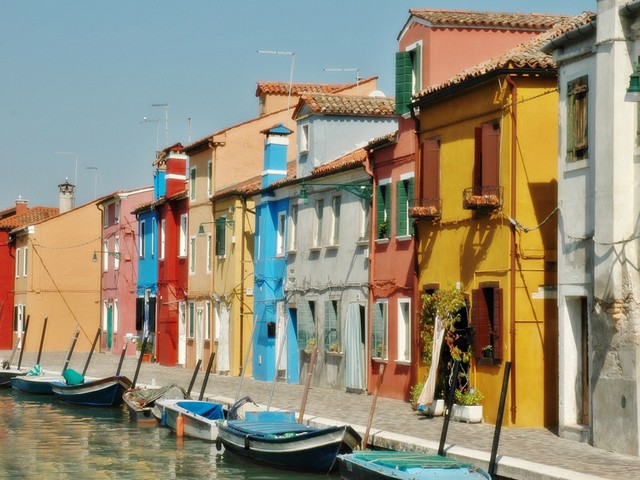
All visitors of Burano remain intrigued by the many colours of houses that are reflected into the green waters of channels, by the Oblique Bell Tower, by the tranquility and the calmness with which the elderly ladies embroider by their tombolo, while they are laughing and chatting in squares among them. It seems to be in paradise. Children who dart freely with their bicycles, balconies with multicolored flowers, fishermen who put up fresh fish from their traditional boats. Visit www.isoladiburano.it, for more information. Photo by Liv Unni Sødem.
Hallstatt, Austria

Hallstatt is an unbelievably spectacular place that even the Chinese have created a copy of the ancient salt mine village. The market municipality was already inhabited in the 1st millenium before Christ: during this period - the iron age - the civilization flourished. When it is bitterly cold outside then the bell tolls for ice divers, in the Salzkammergut. The crystal clear mountain lakes ( Hallstatt and Gosau ) are especially popular amongst divers. Not all lakes freeze over, but all small, biologically active, beautiful, exciting lakes provide the fresh ice for an ice diving adventure. It's a whole new experience, a fairy-tale world beneath the ice of the Salzkammergut lakes. Visit www.hallstatt.net, for more information. Photo by unicoletti.
Wengen, Switzerland
Wengen is the Swiss village of your dreams and looks like something straight out of Heidi. The fact that cars have been banned here for more than 100 years also adds to the charm. The alpine mountain village has been a tourist hub since the late 1800s, when notable guests like writer Mary Shelley sang Wengen's praises. The village's altitude of almost 4,200 feet, attracts skiers, of course, increasing the population almost ten-fold in the winter to around 10,000. The car-free resort of Wengen is situated on a sunny plateau and offers breathtaking view to the Jungfrau. Key excursion is the railway trip to the Jungfraujoch. The Lauberhorn Races in January and the Jungfrau Marathon at the beginning of September are only two of the top events held in Wengen. Visit www.wengen.ch, for more information. Photo by Craig Stanfill.
Colmar, France
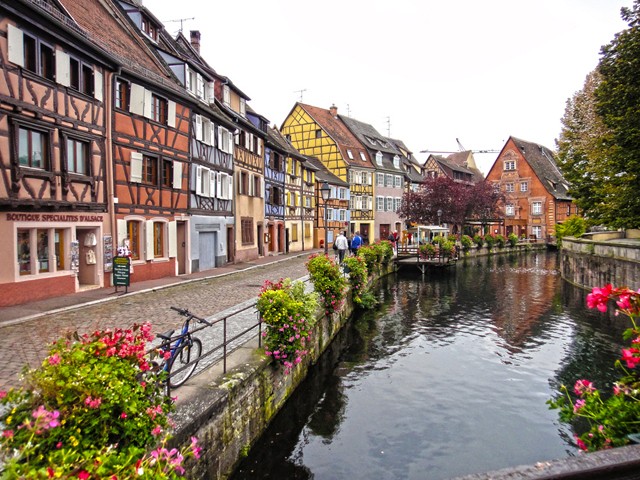
For Georges Duhamel (as he wrote in 1931), Colmar was the "most beautiful town in the world". It has also often been said that it is the most Alsatian town in Alsace! Without going over the top with superlatives, Colmar undoubtedly remains an exceptional town due to the wealth and variety of its historical and architectural heritage. With its 67,000 inhabitants, Colmar retains a “country town” atmosphere which contributes so much to its charm. Wonderfully preserved from the ravages of time, its homogenous historical centre is classed as a 'protected area' and has benefited from careful restoration and ongoing improvements for more than 20 years. 900 computer-driven light sources, using the fibre optics cable network, are skilfully distributed throughout the town and thus allow an original light show throughout the year, which varies in intensity and colour. Visit www.ot-colmar.fr, for more information. Photo by FonzieD.
Rochefort-en-Terre, France

Rochefort-en-Terre is a beautiful, little town in the Morbihan department of Brittany close to Malestroit, Josselin and Ploërmel. Many, half timbered and classically French houses, some covered in wisteria and others displaying summer flowers are a part of this stunningly beautiful town. The centre is full of little alleys, steps and a cobbled walk way up to the Chateau which dominates the little town and the gorge on which it is situated. Walk from Atelier to Atelier and enjoy the variety of crafts, just some of which include a shop which specialises in bellows, art shops, and a glass blower. Visit the soap shop, a hand-decorated china shop, and bag maker. Visit www.gitesandmore.co.uk, for more information. Photo by wikimedia.org.
Reine, Norway

The breathtaking village of Reine is located on the island of Moskenesøya on northern Norway’s Lofoten archipelago. With red and white fishermen’s huts dotting the shoreline and surrounding peaks of granite shooting out of the Reinefjorden, the village has earned a reputation as “the most beautiful place in the world.” Many of the best hikes on the Lofoten Islands are within a short distance of Reine and the fishing village of Å is less than 10 kilometers down the road. For kayaking, biking, and skiing in the winter, outfitter Reine Adventure has its office in town. Some of the best rorbuer on the Lofoten Islands, traditional fishermen's cabins converted into accommodations for travelers, are in or near Reine (see Where to Stay in Reine). And a Coop Market is located in the center of the village, great for stocking up on supplies and having the option of cooking your own meals. Visit www.switchbacktravel.com, for more information. Photo by Baschtli.
Olden, Norway

Let's take a break from the Alps and Pyrenees and head north to Olden, a scenic town of around 500 inhabitants located on one of Norway's longest and most dramatic fjords. While the town is quiet and sleepy most of the year, it has become a popular stopping point for Norwegian Cruises thanks to its proximity to the spectacular Jostedalsbreen Natural Park and dreamy setting of mountains, waterfalls, and impossibly-blue glacial lakes. Photo by John and Karen Jones.
Telč, Czech Republic
It would be hard to imagine a more fairytale-like little town than Telč. A square which looks like it has come straight from the stories of Hans Christian Andersen, a romantic chateau and crystal clear fishponds surrounding the city. Telč is the most perfect example of the Italian Renaissance north of the Alps and a town with one of the most beautiful squares in Europe. It is rightly thus also part of UNESCO world heritage. Most visitors start their tour of the town in one of the most romantic places in the Czech Republic. The square in Telč with its high gables on the multicoloured houses here, arcades full of little shops and cafes where you can sit undisturbed and watch the world pass by, is balm for the soul indeed. You must not forget to visit the chateau, which ranks among the Moravian gems of Renaissance architecture. Visit www.czechtourism.com
Gruyères, Switzerland

A picture-perfect medieval town on a small hill with a castle and three totally different museums: In Gruyères, 800-year-old regional history and culture meet Oscar-winning aliens and Buddhist sculptures. The historical town of Gruyères, has preserved its Medieval character up until today. The old comital residence lies on a hill above the river Saane. The castle, which dates back to the 13th century, is today a museum depicting 800 years of regional architecture, history and culture. The museum of H. R. Giger is to be found in the nearby small castle of St. Germain. This museum showcases the fantastical art of the Oscar-winner and "Alien" creator. The Tibet museum (opened in 2009) with over 300 Buddhist sculptures, pictures and ritual works from various Himalayan regions, is located in the midst of the traffic-free town. The town also has a charm all of its own thanks to its superb gastronomy and its modern show dairy. Visit www.myswitzerland.com. Photo by scotbot.
Bleb, Slovenia
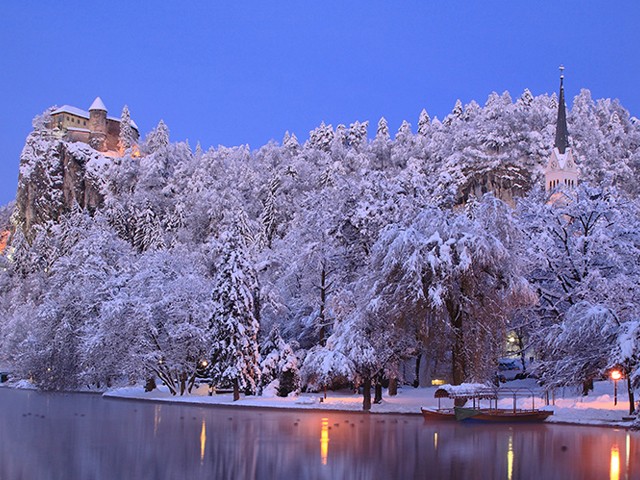
With immense natural beauty, Bled, together with its surroundings, ranks among the most beautiful alpine resorts, renowned for its mild, healing climate and thermal lake water. The beauty of the mountains reflected on the lake, the sun, the serenity and the fresh air arouse pleasant feelings in visitors throughout the year, guaranteeing an ideal base or a relaxing break or an active holiday. Bled attracts businessmen, artists, athletes, explorers, sport enthusiasts, the old and the young, from all over the world, enchanting them to return again and again. Aside from being stunned by natural sights and sweet delicacies of Bled, also treat yourself with some of its cultural potion. The Bled Castle with its touch of magic, architecture and history of churches, as well as monuments and galleries with their sales-exhibition items will help you get familiar with another side of Bled – the one which refers to people, their work and their creations, which made the town of Bled as we know it today." Visit www.bled.si
Albarracín, Spain

The former capital of a Moorish kingdom (Taifa), the small town of Albarracín has preserved all its Islamic and mediaeval flavour. Its old quarter has the Property of Cultural Interest designation. The main thing that surprises visitors who arrives at the town of Albarracín is its imposing fortified enclosure, whose perimeter is far larger than the area of the urban centre. What we see today corresponds to three different periods of construction. The Alcázar Fortress and the Andador Tower are from the 10th century. The steep streets stand out, among which the Plaza Mayor square is found. The Town Hall is located there, providing an amazing lookout point over the Guadalaviar River. The current El Salvador Cathedral, adjoined to the old Episcopal Palace, was built in the 16th century. The Diocese Museum, inside the palace, exhibits a valuable collection of flamenco tapestries. Visit http://www.spain.info. Photo by youflavio.
Giethoorn, the Netherlands
Giethoorn is a village located in the province of Overijssel, there are 4 miles of canals and farmhouses with thatched roofs dating back to the 18th century. This idyllic village has no roads, and the only access is by water over the many beautiful canals or on foot over its wooden arch bridges. Is a popular tourist attraction and has been given the nickname the Venice of the Netherlands, and we can understand why. Many activities you can perform there like cycling or sailing or just a tour to the beautiful canals. There are so many ways to discover its rustic charm. The bridges are made entirely from wood & farmhouses are dated from the 18th century. Visit www.iamgreek.nl. Photo by bertknot.
Bibury, England

Bilbury is located on the River Coln in hilly west-central England and it was described by 19th-century artist-writer William Morris as "the most beautiful village in England", which is saying something in a country known for its watercolor views. The 17th-century stone cottages, the Saxon Church of St. Mary and a still-working 1902 trout farm are some of the must-sees. The most photographed spot is Arlington Row, a collection of 14th-century stone buildings that were converted into weavers' cottages in the 1600s. The River Coln flows through Bibury, sandwiched between the main village street and the Rack Isle. Visit www.bibury.com, for more information. Photo by spaceodissey.
Painswick, Cotswolds, England
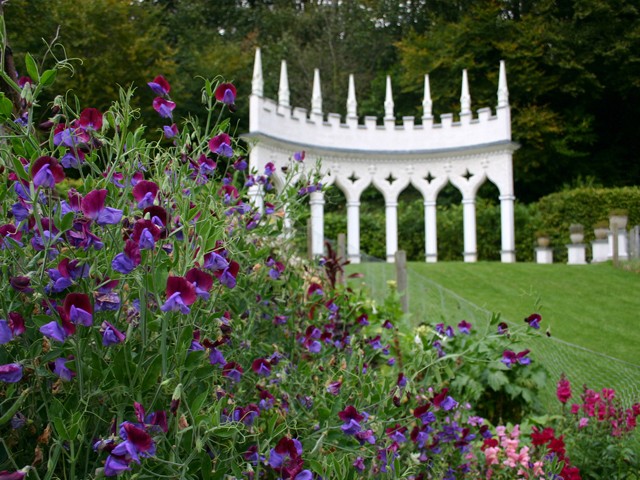
You can’t do the Cotswolds and not err a little on the chocolate box-y side. And sure enough, Painswick (like Bibury, which William Morris called the ‘most beautiful village in England’, Chipping Campden and Bourton-on-the-Water), looks precisely the sort of place that tends to pop up on Christmas cards and cake tins. We’ve chosen it in our pick of pretty English villages, though, not just for its streets and houses (lovely though they are), but because of its churchyard with its famous 99 yew trees, for the nearby Rococo Gardens, and for the great autumn walks to be had out along the Cotswold Way footpath and up into the Cotswold Hills. Visit www.visitthecotswolds.org.uk, for more information. Photo by Gruban.
Lacock, Wiltshire, England

3 miles south from the town of Chippenham. Owned almost in its entirety by the National Trust, its unspoiled appearance makes it a picturesque and quintessentially English place to explore. Lacock village has been used as an important UK film and television set, notably in the BBC productions of Pride and Prejudice and Cranford. It has also been a location in some of the Harry Potter films, and makes an appearance in the film The Wolfman. Visit www.visitwiltshire.co.uk, for more information. Photo by Andy Welsher.
Crookhaven, Ireland
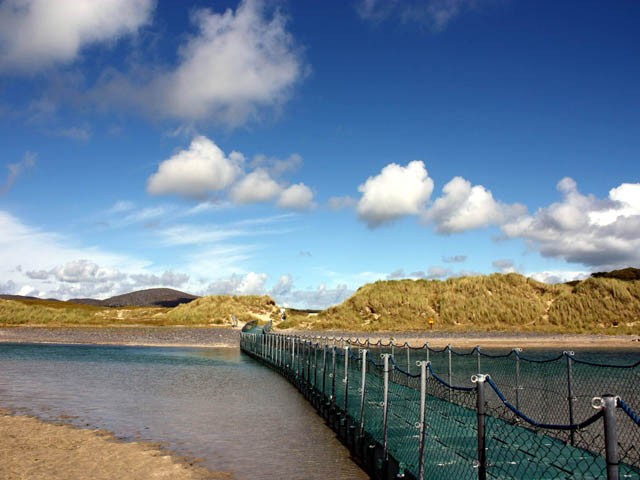
The tiny hamlet of Crookhaven lies about as far down in south-west Cork as you can go without falling into the sea - tucked snugly on the sheltered side of a narrow neck of land which creates a deep inlet - the 'crooked haven' which gave the little settlement its name. It's the very epitome of a sleepy fishing village. Brightly-coloured boats bob at anchor; pastel-coloured cottages slumber in the sunshine along the sloping street. A pub spills tables and chairs out on to the quayside among the drying fishing nets, a small shop sells groceries and postcards as well as shrimping nets, buckets and spades. It looks as though nothing ever has or ever could happen to disturb its peace. Visit www.crookhaven.ie, for more information. Photo by Byrnsey.
Portloe, England
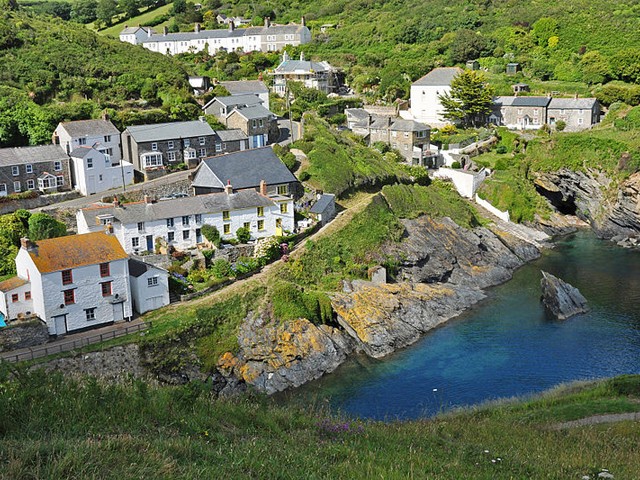
Portloe is considered by many to be the jewel in the crown of the Roseland peninsula and one of the prettiest villages in Cornwall. It’s steep sided valleys has meant that it has managed to escape development over the years and many buildings differ little from when they were built. Sir John Betjeman said of Portloe "One of the least spoiled and most impressive of Cornish fishing villages". Visit www.cornwalls.co.uk, for more information. Photo by Wikipedia.
Comrie, Perthshire, Scotland

Set in the southern Highlands of Scotland, Comrie is a beautiful village, which lies on the banks of the pebbly River Earn. The White Church is the focal point of the village and at the end of Comrie's small square you'll find a striking building portraying Scottish Baronial architecture, designed by architect Charles Rennie Mackintosh. Nearby you'll find the deep freshwater pool Linn a' chullaich, which is used for wild swimming in the summer, the picturesque Glen Artney, which was immortalised in Sir Walter.
Tobermory, Isle of Mull, Scotland

The brightly-painted, picture-postcard village of Tobermory in Mull is surrounded by high woodland-fringed hills and was built as a fishing port in the 18th century. There is reputedly the wreck of a Spanish galleon somewhere in the mud at the bottom of the bay and wildlife lovers can spot whales dolphins and basking sharks off the coastline. Visit www.travel.aol.co.uk, for more information. Photo by low cloud.
Dinant, Belgium

Dinant is a lovely small town in Belgium, in the province of Namur, located 90 kilometers south of Bruxelles, in a picturesque landscape on the valley of Meuse. Due to the association with Adolphe Sax, the most famous of its inhabitants and inventor of the saxophone, Dinant is always where the musical action is. A lot of cultural events are held here in his memory, which makes this charming town an important tourist attraction. This charming place is dominated by two imposing buildings: the Citadel, built on a cliff that measures 100 meters and the distinguished Notre Dame Cathedral with its bronze dome. The Citadel is a former military fortress built in 1820, reachable by car cable ride or by ascending 420 stairs built into rock. There is no need for public transportation in Dinant, as one can easily walk from one point of interest to another, it is that small. Visit www.travel.aol.co.uk, for more information. Photo by low jiuguangw.













